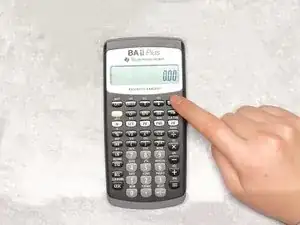
Battery
These are some common tools used to work on this device. You might not need every tool for every procedure.
This calculator is manufactured by Texas Instruments, a technology company based in Dallas, Texas in the United States. The company manufactures semiconductors, integrated circuits, and processors as well as calculators and other products. This product is a finance calculator, and is intended to be used for accounting, economics, statistics, and other business-related applications. Along with standard mathematical functions, this calculator can solve financial calculations, including ‘time-value-of-money calculations.’ This includes calculations for depreciation, mortgages, savings, cash-flow analysis, and many more. This calculator is approved for use on the Chartered Financial Analyst (CFA) exam and the GARP Financial Risk Manager (FRM) exam.
The BA II Plus calculator is found in many lists of the best financial calculators available. In one review by Architecture Lab, it got the number one spot out of thirteen financial calculators. This is because of it’s several distinctive features that promote ease of use and accessibility while still providing high performance for students and professionals alike. First, the colored keys on this calculator are designed to make it easier and faster to identify their functions, so that experienced users who are familiar with the calculator don’t have to carefully read the keys every time they want to do something. Instead, they can simply recognize the color of the key that they want. Another helpful feature is the worksheet mode. This allows the user to store data in the built-in memory of the calculator. Finally, the Architecture Lab review praised the the high speed of the processor, which made calculations easy and efficient.